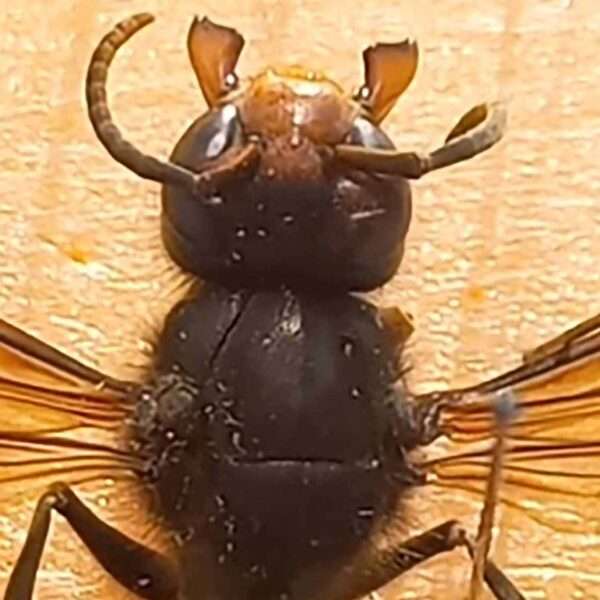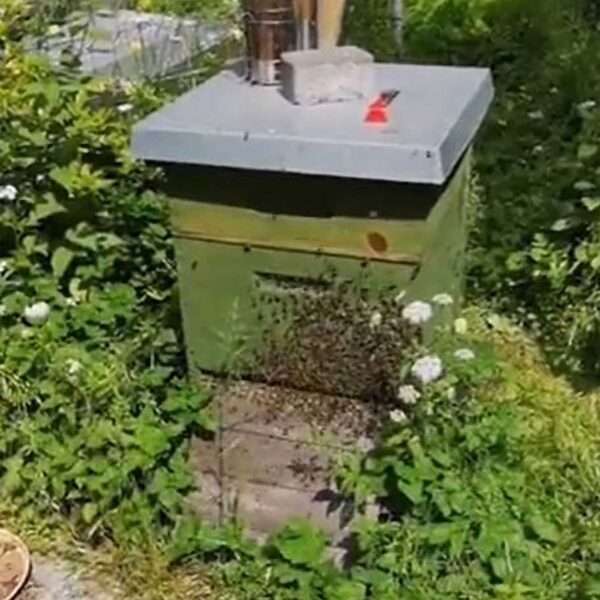One of the most common crops in the world has been found to be a popular nectar source for honeybees in a study focusing on the correlation between soybean farming and honeybees’ pollinating activity.
More than 353 million tonnes of soybean were produced globally in 2020.
Scientists at Ohio State University examined more than two dozen samples from local apiaries and observed the social insects’ waggle dances to determine whether they had a preference for foraging soybean farmlands.
The researchers said: “As a highly versatile commodity crop, soybean has become one of the most widely cultivated crops globally. The total area of land planted with soybeans in the United States reached a record high of 36.3 million hectares in 2017, nearly a 90 per cent increase since the 1970s.
“Beyond a shift in soybean prevalence on existing cropland, there has also been a high rate of land conversion from natural habitat to corn and soybean cultivation in regions that represent the premier summering ground for honeybees, potentially impacting their foraging ecology.”
The scientists – who criticised that the expansion of soybean cultivation would homogenise landscapes – also pointed out that soybeans are “potentially valuable” to pollinators as a source of nectar.

They explained: “Soybean is not considered an attractive nectar source because honey bees are only occasionally observed on soybean flowers. Because soybean flowers grow inconspicuously under the leaf canopy, the foraging activities of bees in a soybean field can easily go unnoticed.”
According to the Ohio State University researchers, an individual soybean flower can produce up to 0.5 microlitres of nectar.
The group of researchers from the department of entomology said: “A soybean plant produces an average of 200 to 800 flowers, depending on the variety. At the recommended density of 250,000 to 300,000 plants per hectare, a single hectare of soybean potentially produces 24 to 96 litres of nectar which could yield 17 to 67 kilogrammes of honey.”
For their study, the entomologists analysed honey samples from the observation hives by using a molecular method to relate nectar sources with favourable foraging habitats.
A total of 79 samples were collected. Since some lacked essential location information, 31 samples were eventually included in the final analysis. Soybean pollen was detected in 17 of the 31 samples which had been analysed.
The researchers’ analysis of the honeybees’ waggle dances revealed “increased probabilities of recruiting foragers to the interior of soybean fields in July and August when soybean flowers were first and last noted respectively in the field adjacent to the apiary.”
The scientists added: “A higher percentage of foraging activity occurred in soybean fields than landscape makeup would predict for the distance bands between 0.5 and one kilometres as well as between one and 1.5 kilometres.”
They explained: “This indicates that foragers preferred soybean fields over other foraging habitats between 0.5 and 1.5 kilometres from the hive.
“For activity occurring within 0.5 km or beyond 1.5 km of the hives, bees foraged in soybean fields at a rate proportional to the amount of soybean in the landscape and did not demonstrate a preference between soybean or non-soybean landscape features for these distance bands.”
The Ohio State University research group underlined: “At no distance did bees show a preference for non-soybean habitats over soybean fields.”
Their study – entitled “Soybean is a Common Nectar Source for Honey Bees (Hymenoptera: Apidae) in a Midwestern Agricultural Landscape” – was published by the Journal of Economic Entomology.
The global production of soybeans was 353,463,735 tonnes in 2020, according to the Food and Agriculture Organization (FAO). The institution underlined that this had been a year-on-year increase of more than five per cent.
Brazil is the largest producer of soybean in the world, followed by the United States, Argentina, China and India.










